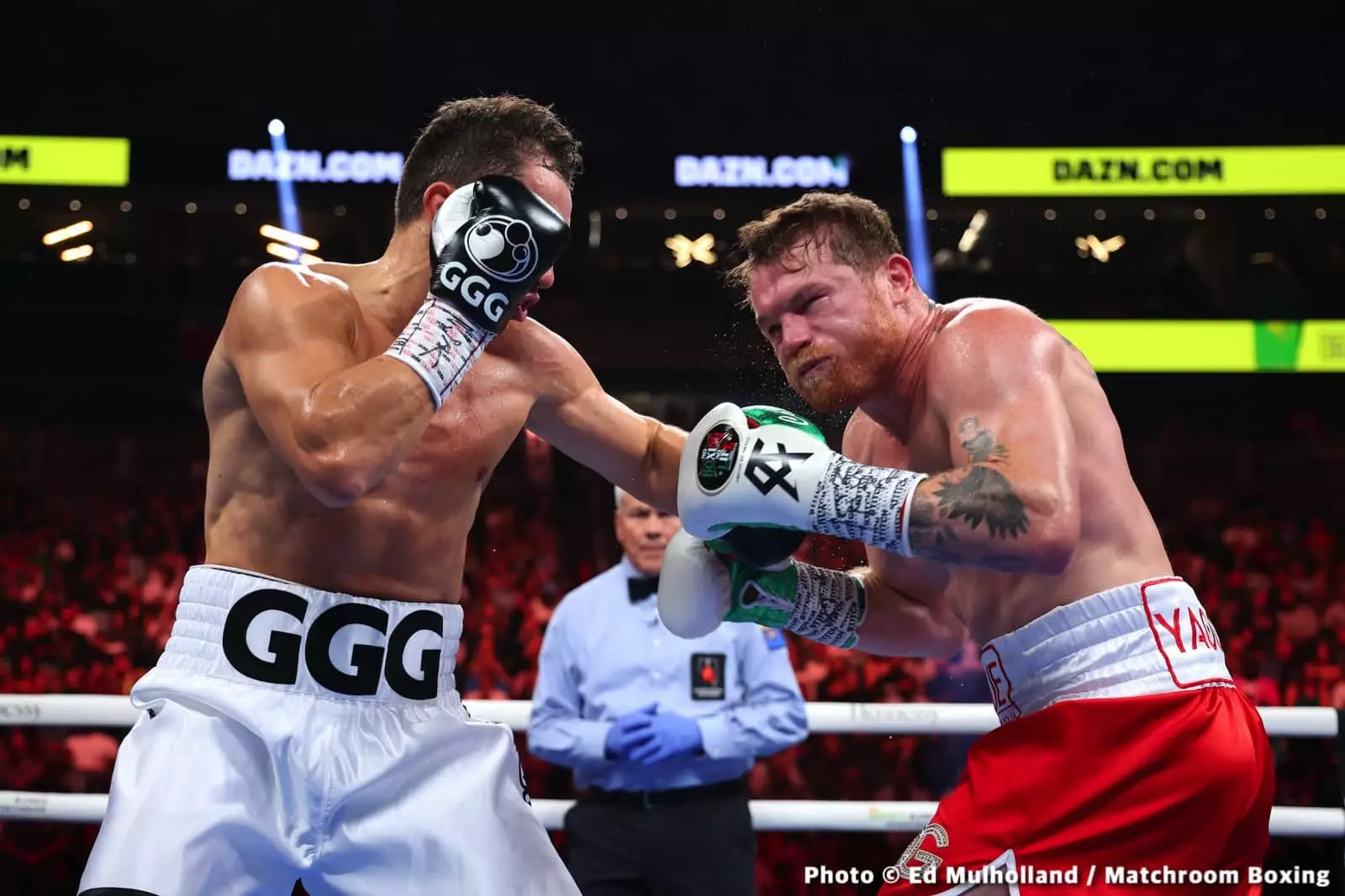Terence Crawford, hailed as one of the sport’s most skilled fighters, enters his anticipated clash with Canelo Alvarez under a cloud of skepticism rooted in physical limitations. While Crawford’s technical prowess is undeniable, critics argue that his power profile simply doesn’t match the transformative strength displayed by fighters like Gennadiy Golovkin. Abel Sanchez’s comments underline a vital point: in boxing, raw power often dictates the outcome more than technique alone. Crawford’s lack of a devastating punch at the higher weight classes puts him at a tactical disadvantage. Unlike Golovkin, whose cannon-like jab and relentless pressure could physically wear down opponents, Crawford’s arsenal may fall short when faced with a fighter as robust and experienced as Canelo.
The crux of the issue with Crawford’s approach lies in his physical development—or rather, the lack of it at the 168-pound division. Critics note that Crawford hasn’t had sufficient time or opportunity to bulk up and develop that extra muscle mass that can serve as a barrier against Canelo’s punishing punches. Golovkin’s impressive power wasn’t just a matter of genetics but the result of deliberate training and body maturity. Crawford’s recent fights at 154 demonstrate a skillful technician trying to overcompensate with volume rather than power, making the transition to 168 even more daunting.
The Strategy of Engagement and Its Consequences
Sanchez’s insights also highlight the importance of fight style and tactics. Crawford’s pride and fighting spirit might prompt him to engage aggressively, but this could play directly into Canelo’s hands. If Crawford succumbs to moments of vulnerability—like he did against Madrimov—Canelo will seize the opportunity to get inside and land heavy countershots. Canelo’s ability to time opponents during their tentative moments is well-established, and with Crawford lacking the physical resilience of Golovkin, the risk of being overwhelmed increases exponentially.
Furthermore, the promotional and entertainment considerations add another layer of complexity. Crawford’s desire to provide action-packed entertainment might lead him to engage more freely, but this leaves him susceptible to Canelo’s counterpunching. The reality is that Canelo’s fighting style thrives on turning aggressive opponents into passive targets through smart, calculated pressure. Hence, Crawford’s natural tendency to fight to win could inadvertently set up opportunities for Canelo to land decisive blows.
The Power Gap: Real vs. Perceived Strength
One of the most compelling arguments against Crawford’s chances revolves around the intrinsic difference in punching power. Golovkin’s power, even at middleweight, was legendary, and his ability to keep opponents at bay was instrumental in his dominance. Sanchez’s comparison between Golovkin and Crawford isn’t merely about size; it’s about the capacity to intimidate and physically control a fight. Crawford, despite his technical skill, doesn’t possess that same level of ingrained knockout power, especially when moving up divisions.
The recent fight at 154 with Israil Madrimov underscored this point—Crawford relied on volume, not raw power, to secure victory. The question remains: can Crawford generate enough force in the 168-pound class to alter Canelo’s aggressive approach? The evidence suggests he cannot unless he undergoes a significant transformation—something that would have required more deliberate preparation and body conditioning, which Sanchez indicates has not been adequately achieved.
The Risks of a Rush Job and the Need for Development
Prompt decision-making without proper gradual development raises serious concerns. Crawford jumped straight into the Canelo fight without taking necessary tune-up bouts or building the requisite strength. This hasty move resembles a shortcut that may backfire critically. Without the proper time to adapt, Crawford risks being physically overpowered and outstrategized by a seasoned campaigner like Canelo.
His rapid ascent raises doubts about whether he can sustain a rigorous 168-pound campaign after just adding weight and limited training focused on muscle development. Critics argue that without the process of deliberate, incremental growth, Crawford might emulate Golovkin’s style only superficially—lacking the same resilience, power, and ability to impose his will physically. The short change in preparation time isn’t just a gamble; it could be the decisive factor against a fighter as versatile and vicious as Canelo.
In the end, Crawford’s skill set, impressive as it is, faces an uphill battle against the reality of physicality and power. His natural talents and experience are not enough to bridge the power gap or withstand the brutal intensity Canelo brings into the ring. While he remains a master craftsman, success against Canelo hinges on more than technical superiority—it demands the kind of physical dominance Crawford has yet to demonstrate.


Leave a Reply